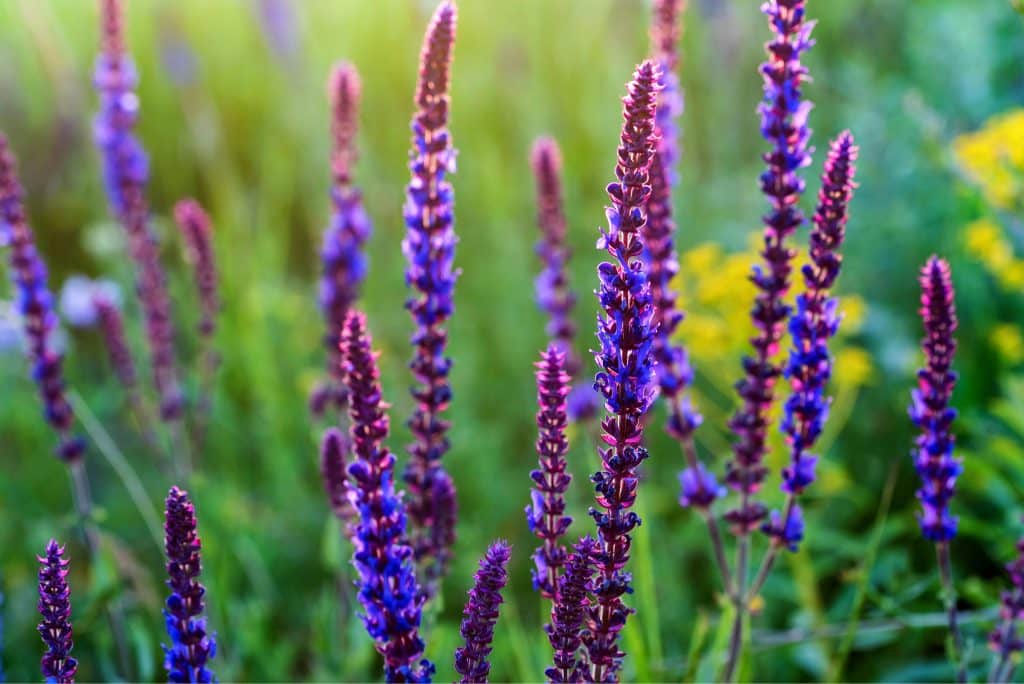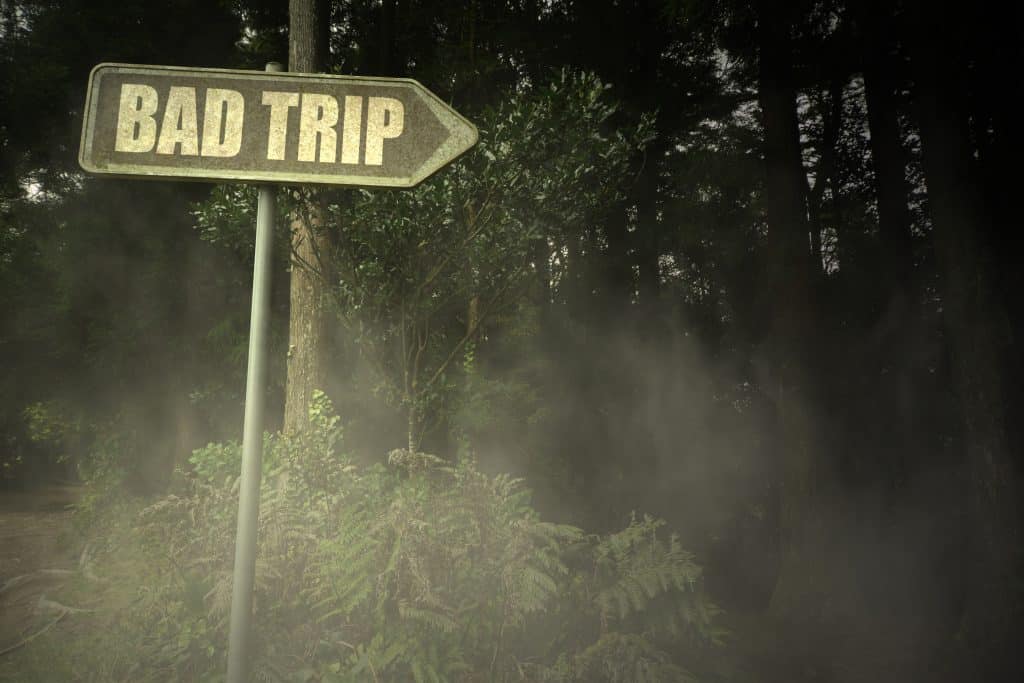Salvia is an incredibly potent, plant-based psychedelic that is federally legal in the United States (as well as most other countries), it’s cheap, and can be found at smoke shops and headshops across the nation. If it’s so strong and easily accessible, how come the trend of smoking salvia never caught on? And is that set to change in the future? Let’s take a closer look.
What is Salvia?
Salvia divinorum – also known as seer’s sage, yerba de la pastora, magic mint, or just salvia – is one of the most potent (by mass), naturally-occurring, plant-based psychedelics in the world. It has been used for centuries by Mazatec shamans and continues to be utilized for medicinal and spiritual purposes in numerous areas of the Latin America. However, it’s native to the Sierra Mazateca region of Oaxaca, Mexico. The name, Salvia divinorum translates to “sage of the diviners” in Latin.
Salvia is one of 3,500 members of the mint family, so it has many physical traits similar to other plants in that classification. The plant can grow to a height of over 3 feet, and is characterized by square, hollow stems, large, flat leaves, and white flowers with violet calyxes. Apparently, botanists have yet to conclude whether Salvia is a hybrid or cultigen because native plants rarely produce viable seeds, they typically reproduce vegetatively.

The active ingredient in Saliva is a structurally unique diterpenoid compound known as salvinorin A, which is a potent K-opioid agonist. This is unique for a plant that produces hallucinations, as most act on our serotonin receptors. It has not been studied extensively in any type of clinical setting, but early research indicates that it is has a relatively good safety profile and low toxicity, since the effects are so transient.
Once more, salvia is very powerful, and a drug that should be respected. For some people, the Salvia experience can be extremely uncomfortable, unpleasant, and disorienting, but it can also be spiritual, mind-expanding, and very introspective. Like with all other potent psychedelics, it’s of utmost importance to approach the drug with an optimistic yet responsible mindset.
How to consume it
Smoking – Many people’s initial decent into the crazy world of the salvia high, is by smoking a bowl of it. As a matter of fact, for most people I’ve spoken to (myself included), smoking is the only way they’ve done salvia. Smoking it, in and of itself, amplifies the experience tremendously. According to those who work with the plant in therapeutic and ceremonial contexts, saliva is a “water spirit” and fire aggravates her, so when you smoke it, she “pulls her claws out”, which is said to be the reason behind the intense trips when smoking it. However, when consumed in more traditional methods (like through quidding, which I will explain in more detail below), she “puts her claws away”, and high is much more positive, euphoric, and mellow.
Quidding – A salvia quid is prepared by stacking fresh or hydrated dry leaves, which all the trichomes in between the leaves like a type of salvia sandwich. Then you simply chew the quid until the trichomes are broken down and the salvinorin A is released. Although this is the traditional way to consume salvia, it does make for a much weaker high, so to remedy this, I have read about some people opting for a “swish and swallow” technique, which sort of takes quidding to a new level by taking the trichomes, rupturing them, mixing the resin with some finely powdered leaf, and swishing the concoction around in your mouth. After a few minutes, swallow and you should be good to go.
Extract – Another way to use salvia, like most other plant-based entheogens, is by making a simple extract which you can mix with a beverage or use sublingually. This is typically done using acetone, but I personally have never made an extract of any type so this is not my area of expertise.
The salvia experience
For me, the salvia experience was really interesting. Neither good nor bad, yet very intense. I’ve tried a few separate times, but my most notable memory with it is the time my best friend and I tried. We were both sitting on the couch and I packed an average sized bowl for us to share, we each got 2 or 3 decent hits and away we went. At that point, we weren’t really “together” mentally anymore. Both of us were having some trippy out of body experiences and at times it felt like I was just existing there, floating in some unfamiliar world.
Thanks for dropping in. Stay current by subscribing to the Cannadelics Weekly Newsletter, which also gets you access to awesome deals on cannabis flowers, vapes, edibles, smoking paraphernalia, cannabinoid products (including HHC), and a whole lot more. Tis the season to get yourself stoned!
I remember Seinfeld was playing on my TV, and anytime I looked at the screen it felt like I was instantly transported into the Seinfeld universe, like I was part of their group hanging out in the living room with them. Then I would look over at my friend and immediately snap back into reality, still tripping, but remembering where I was and that I smoked Salvia. After a while of bouncing back and forth between the TV world and my world, I decided to step outside for a change of scenery and to smoke a cigarette and ground myself a bit (I smoked back then), and my friend joined me. Shortly after walking out on my patio we quickly came down from the strange high.
All that said, the whole adventure only lasted about 15 minutes, which is pretty standard for salvia when it’s smoked. Most people I’ve spoken to, read about, or witnessed myself, shared similar stories. A short but powerful high, that was neither pleasant or unpleasant, with some dissociation, mild hallucinations, and out of body experiences.
However, for some people, a salvia trip can be a rather scary ordeal, and I’ve seen this happen myself. One night, a few friends of mine gathered at my apartment to smoke some weed and salvia. There were about six of us total, we smoked a blunt, then each took a couple hits of salvia. Everyone reacted as expected except for one guy, who went totally off his rocker. He was running around my apartment, yelling at and trying to fight with inanimate objects, laughing hysterically then almost immediately after bursting into tears, falling over stuff and almost hurting himself, and so on… you get the idea.

Not only was his reaction so completely off-the-wall, but it lasted for about 45 minutes! It seemed like a terrifying experience for him, and quite frankly, it was pretty terrifying for the rest of us too. When he came to, he barely had any recollection of what happened. We all look back at it now and laugh, but it really turned all of us off to the idea of smoking salvia for fun.
It really goes to show how personalized drug experiences can be. As far as we all knew, he hadn’t taken any other substances that night (aside from weed which we all smoked) and he didn’t smoke more salvia than anyone else around him. But he had a relatively extreme, negative, and long-lasting trip, which is most people’s worst fear when experimenting with new recreational drugs.
Legality and popularity, and why the salvia trend never picked up
Currently, it seems that salvia is keeping a low profile. Maybe due in part to the fact that more than half the states have banned its sale, so it’s not that easy to get anymore. But I remember about a decade ago, give or take, there was surge in salvia experimentation among teens and young adults, as evidenced by headlines like this one from a 2008 ABC News report, asking if “salvia is the next marijuana?”
The states acted swiftly against it. Although Salvia is still not federally regulated under the Controlled Substances Act, 29 states have made laws banning it entirely, while numerous others have age restrictions for its purchase. The states where salvia remains legal across the board are: Alaska, Arizona, Idaho, Massachusetts, Montana, Nevada, New Jersey, New Mexico, New York, Oregon, South Carolina, Utah Vermont, Virginia, Washington, and West Virginia. The states that have placed age restrictions on salvia are: California, Maine, and Maryland. And in Rhode Island, salvia extract is legal but raw plant material is not. In any state not listed above, it’s illegal.
Growing up in California, one of the states that still allows people over the age of 21 to purchase it from head shops, it was something most of my friends had experimented with at least once or twice, but not a drug that people seemed to use regularly. In all fairness, everyone who I’ve spoken to smoked it, and since we now know that intensifies the experience and is more likely to lead to bad trips, it makes sense why most people seem averse to it after a couple tries. And this could be another reason why it hasn’t caught on in popularity like other recreational substances.
Final thoughts
Salvia is a very interesting substance, and one that is much more intense than I believe most people realize. Weird experiences are common, especially when it’s smoked, but when used in a traditional fashion the high is said to be blissful and healing. There are many reasons why it hasn’t caught on in popularity yet, but that can always change in the future, and it probably will.
What are your experiences with salvia? Did you smoke it, quid it, or make an extract? Was it a good or bad high? Drop us a line in the comment section below, we love to hear from our readers!
Welcome to the site! Thanks for joining us at Cannadelics.com; a news platform dedicated to bringing you optimal reporting for the cannabis and psychedelics fields. Stop by regularly to stay updated, and subscribe to the Cannadelics Weekly Newsletter, so you’re never late to get the news.
The post Why Salvia Never Caught On – And Will It in the Future? appeared first on Cannadelics.
Via https://cannadelics.com/2023/01/08/why-salvia-never-caught-on-and-will-it-in-the-future/
source https://rosalinaklerkx.weebly.com/blog/why-salvia-never-caught-on-and-will-it-in-the-future
No comments:
Post a Comment